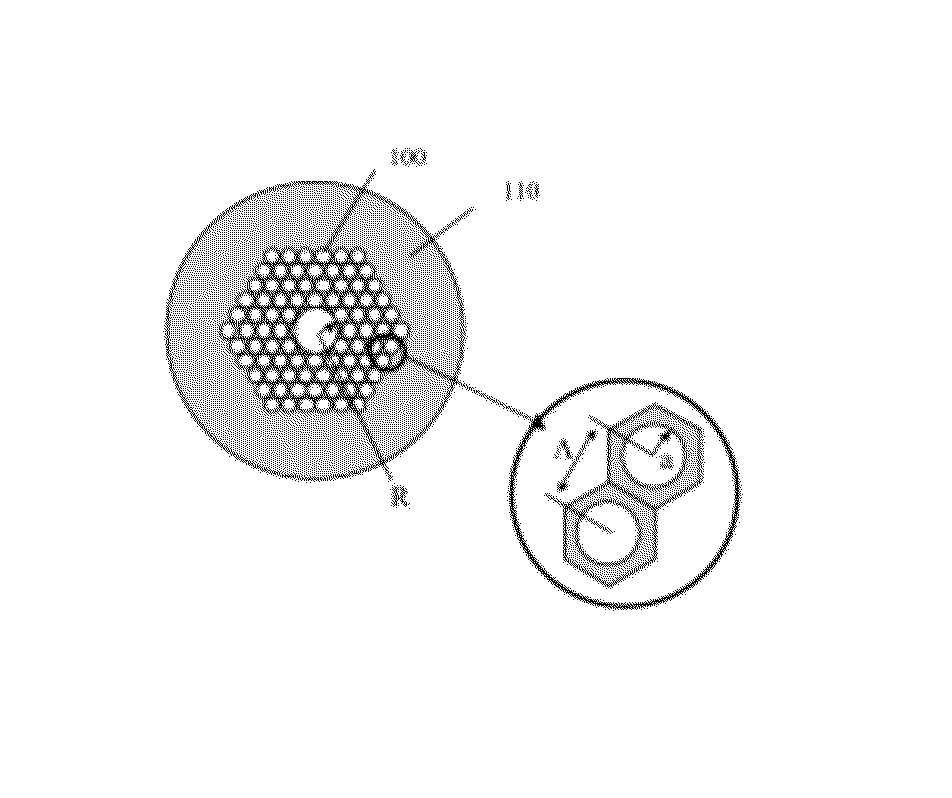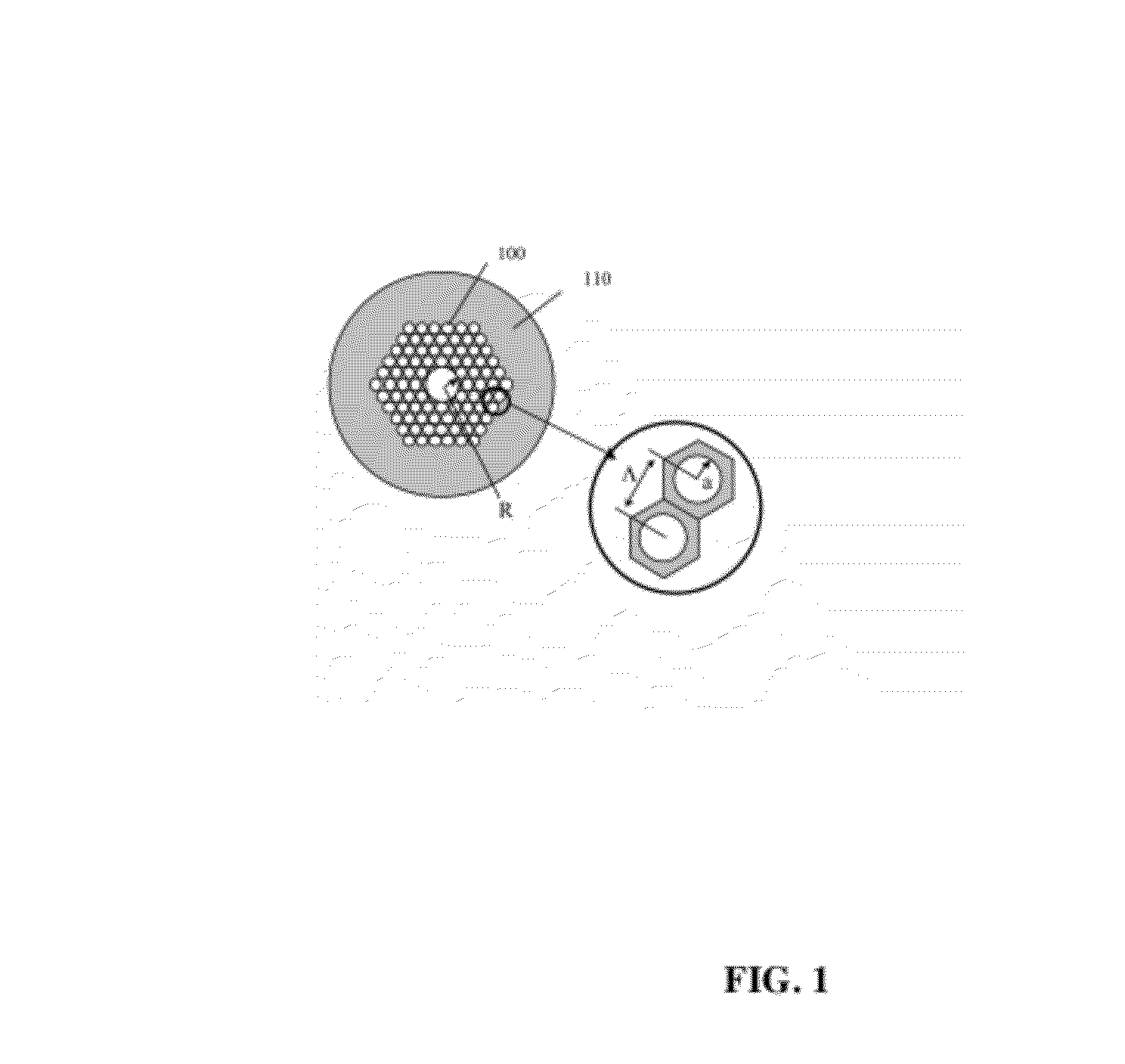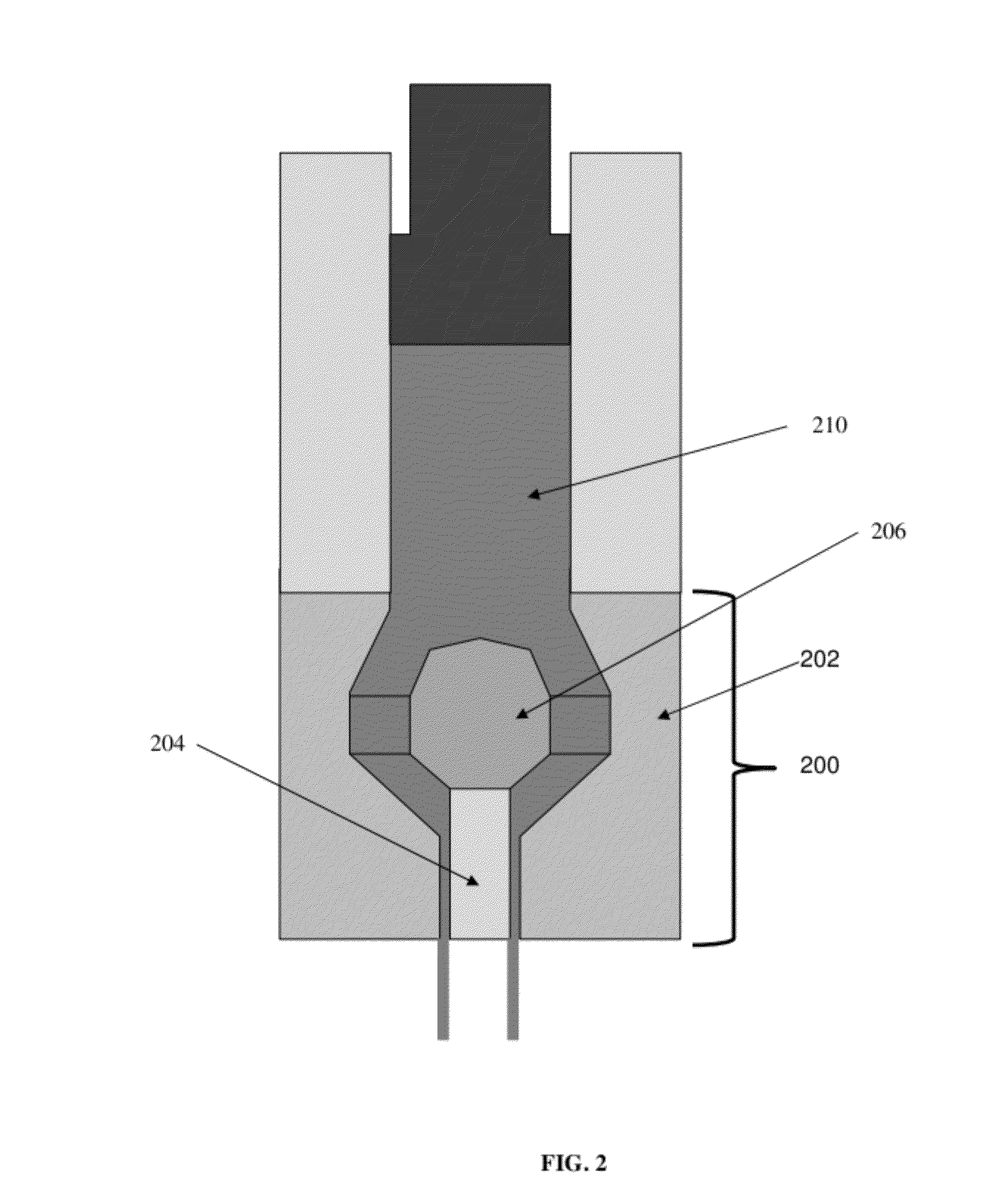Hexagonal tube stacking method for the fabrication of hollow core photonic band gap fibers and preforms
a technology of photonic band gap fibers and hollow cores, applied in the field of hexagonal tube stacking, can solve the problems of difficult removal of interstitial voids, and achieve the effects of reducing system complexity, weight and cost, and high laser power delivery
- Summary
- Abstract
- Description
- Claims
- Application Information
AI Technical Summary
Benefits of technology
Problems solved by technology
Method used
Image
Examples
examples
[0024]A chalcogenide glass tube having a hexagonal outer transverse shape and a circular inner transverse shape was fabricated by extrusion. This example comprises an arsenic sulfide based glass and was extruded at a temperature of about 280° C. through an appropriately designed stainless steel die. The largest dimension of the outer transverse shape (circumscribed diameter measured corner-to-corner) was 16.5 mm and its length was about 15 cm.
[0025]A chalcogenide glass tube having a circular outer transverse shape and a hexagonal inner transverse shape was fabricated by extrusion. This example comprises an arsenic selenide based glass and was extruded at a temperature of about 280° C. through an appropriately designed stainless steel die. The outer diameter of this tube was about 16 mm and its length was about 9 cm.
[0026]An assembled chalcogenide glass, 7-cell HC-PBG preform was fabricated. It is so called since the core region is missing the equivalent of 7 micro-tubes. This prefor...
PUM
| Property | Measurement | Unit |
|---|---|---|
| outer diameter | aaaaa | aaaaa |
| powers | aaaaa | aaaaa |
| outer diameter | aaaaa | aaaaa |
Abstract
Description
Claims
Application Information
 Login to View More
Login to View More - R&D
- Intellectual Property
- Life Sciences
- Materials
- Tech Scout
- Unparalleled Data Quality
- Higher Quality Content
- 60% Fewer Hallucinations
Browse by: Latest US Patents, China's latest patents, Technical Efficacy Thesaurus, Application Domain, Technology Topic, Popular Technical Reports.
© 2025 PatSnap. All rights reserved.Legal|Privacy policy|Modern Slavery Act Transparency Statement|Sitemap|About US| Contact US: help@patsnap.com



